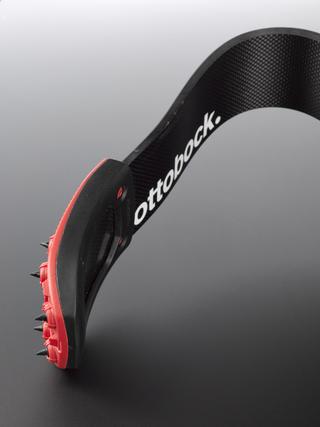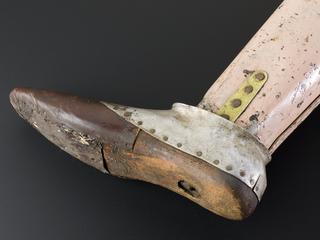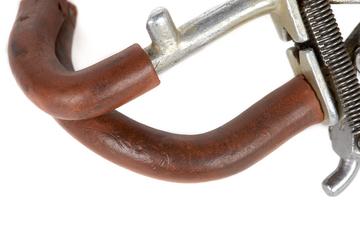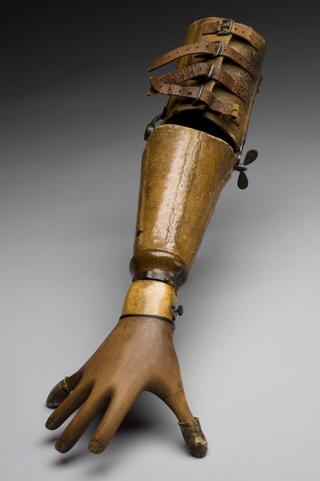
Wooden 'Anglesey' artificial right leg, England, 1915-1925
- maker:
- William Robert Grossmith
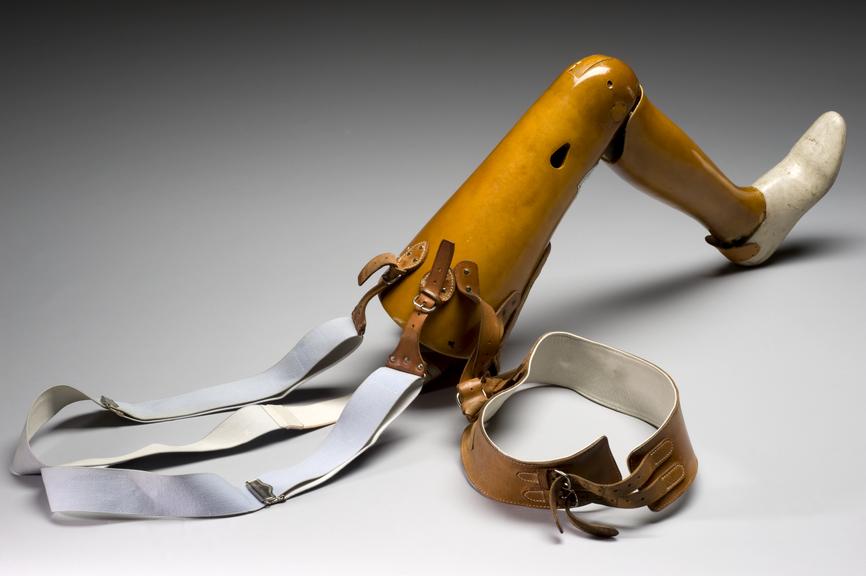
Wooden "Anglesey" prosthesis for right above knee amputee. Broad leather waist belt with two straps and buckle fastening and mortice and tenon ankle joint. Smooth grey leather foot covering. Made by Grossmith, England, c.1920. Weight: 7 lbs, 3.1 kg.
The ‘Anglesey’ prosthetic leg is named after the man who popularised the design, the Marquis of Anglesey, Henry William Paget (1768-1854). Paget lost a limb at the Battle of Waterloo in 1815 whilst riding alongside the Duke of Wellington. Legend has it that Paget, on receiving a gunshot wound to his leg, looked down and cried, “By God, sir, I’ve lost my leg,” to which Wellington, briefly distracted from his observations, replied, “By God, sir, so you have!”.
The leg is also known as a ‘Clapper’ after the noise it makes when the toes, ankle and knee are flexed. Although the design was slightly modified over time, it essentially remained unchanged for decades. Made for a wounded First World War serviceman who had his right leg amputated above the knee, the prosthesis is secured around the waist and thigh. The foot is moulded to look like a shoe.
Details
- Category:
- Orthopaedics
- Object Number:
- 1999-444
- Materials:
- wood, leather, varnish, cotton (fibre), nickel plated, rubber and wool
- Measurements:
-
overall: 900 mm x 432 mm x 177 mm, 3.42 kg
- type:
- artificial leg
- credit:
- Richmond Twickenham and Roehampton Healthcare NHS Trust
